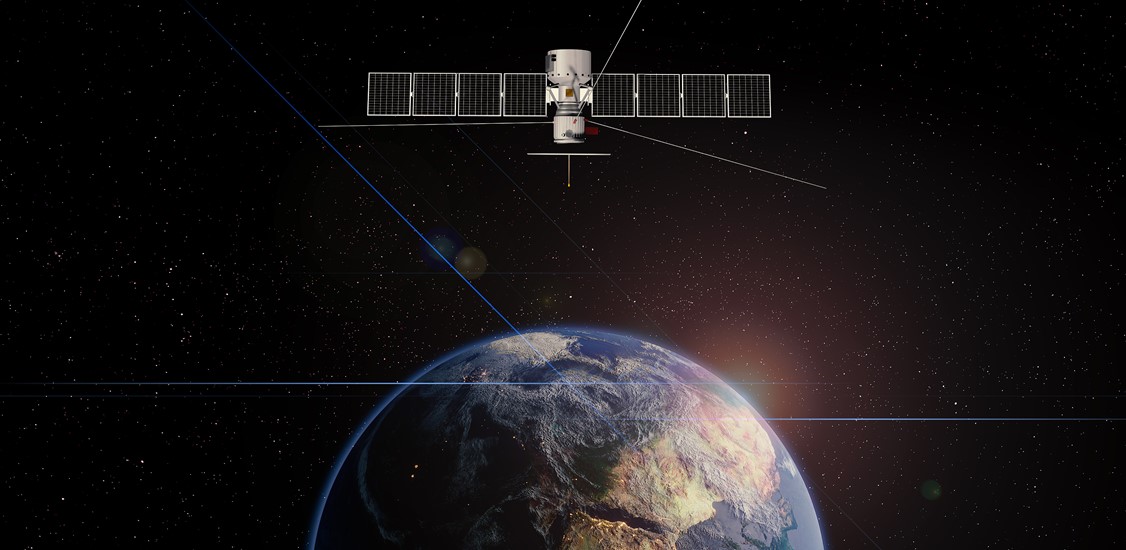Radio has a long history. Ever since Guglielmo Marconi developed the first system in 1895, radio has been put to work in a wide variety of ways across a range of fields, from communication and radar to navigation.
It’s no surprise, then, that radio is trusted and popular. It does the job. Laser, on the other hand, is new. It’s the interloper, evoking sci-fi and the bleeding edge of innovation. It’s less understood, and less tested. In fields where reliability is essential - defense or intelligence, for example - laser adoption will only come when the technology’s benefits and security clearly outweigh existing radio-centered systems.
And we have finally reached that tipping point.
An undetectable alternative
Because of the properties of lasers, they’re almost impossible to see. They don’t spread or leak, as radio does, which can make laser communication almost undetectable: that’s why we classify lasers as “low probability of detection” and “low probability of intercept” (LPD/LPI).
Physics makes radios broadcast to large areas; from satellite to ground, for example, a radio broadcasts tens of kilometres at least. It is great for satellite TV, less so for point-to-point secure communication. Anyone within that radius can intercept the signal. And “side lobes” make the detection zone even wider.
In contrast, lasers transfer information along a narrow beam. From the same satellite, instead of tens of kilometers, we are looking at tens of meters. This makes interception and detection next to impossible. For the same reason, laser communication interference is practically nonexistent. Where radio waves overlap and spectrum use needs to be managed by the ITU, laser beams do not. And laser is unjammable, too. In recent conflict zones, the jamming of radios is becoming a major concern. If radios for a missile defense system are jammed, the consequences can be lethal.
Overcoming laser’s Achilles’ heel
Laser, then, is more secure than radio. But it’s also more effective.
Lasers can transfer many times more data more quickly. Although there are very clever ways of increasing the security of radio broadcasts, they tend to come at the cost of bandwidth. Indeed, as the security of radio increases, the amount of data that can be transferred tends to go down.
Given all this, moving from radio to laser would seem to be a straightforward decision. But on top of its technological infancy, one reason why laser has not been adopted widely is because it has, for a long time, struggled with a nagging problem, one which might even be described as its Achilles’ heel. That problem is atmospheric turbulence.
Our atmosphere, the envelope of gases surrounding the earth, is highly variable. There are differences in temperature, wind, pressure and the composition of gases. Even in the absence of clouds, these factors can affect the optical paths of laser beams, disturbing and warping their shape. In a nutshell, the integrity of the laser link breaks down as a result of variabilities in the atmosphere. And so the almost undetectable, non-interceptable, unjammable laser link suddenly becomes very difficult to use.
Researchers in the laser communication field have put their minds to solving this task, transferring astronomy techniques such as adaptive optics to telecom, improving beam steering and tracking, and implementing error correction algorithms to try to deal with the effects of a degraded laser link. There were times when it seemed like the problem of atmospheric turbulence was intractable, or at least that the mass adoption of lasercom was far away, because turbulence was too fast to deal with. But now, thanks to improvements in turbulence compensation architecture, including non-mechanical systems, the problem of atmospheric turbulence has finally been solved.
The new space race
With its Achilles’ heel finally fixed, interest in laser communication is growing rapidly. China is investing heavily in the technology. It has also become a top priority among defense professionals in the US, who are keen to keep pace in what some are calling the new ‘space race’. NASA is exploring laser communication, installing a terminal on the International Space Station that they say will allow astronauts on the space station to send high-resolution data, including images and video. Add all of this together, and it’s clear that laser is having its ‘moment’.
But laser technology has the potential to deliver so much more than a mere upgrade on our current radio systems. The full impact of optical communication could provide seismic changes to the way we communicate, providing the same sweeping impact that we’ve experienced since switching copper wire to fiber networks.
That’s particularly true when it comes to military and intelligence settings.
From LiDAR (Light Detection And Ranging) to Satellite Earth Observation (EO), intelligence gathering and monitoring have become key concerns for governments across the globe. These systems rely on thousands of interconnected satellites, with vast quantities of data being exchanged between them in real-time. With the number of observation satellites only set to increase in the future, our current communication systems are simply not able to manage the strain that’s being put on them.
Then there’s the issue of security.
While data protection has become a key concern for individuals, enterprises and organizations - it’s also become a battleground for national security. With so much confidential information being collected and exchanged, securing this data has become a strategic imperative. And leveraging conventional fiber networks typically does not cut it: existing optical fiber are routinely tapped and today’s digital encryption can be decrypted with tomorrow’s computers, putting a use-by date on the confidentiality of data.
We expect to see more and more nations join the race for laser communications, as data collection and protection capabilities become central security issues. As they do, laser coms in space will stop being the stuff of science fiction and become key components in our everyday lives. And who knows, perhaps in a few decades’ time the technology will become as ubiquitous as radio has in the 128 years since it was first developed by Guglielmo Marconi.






















